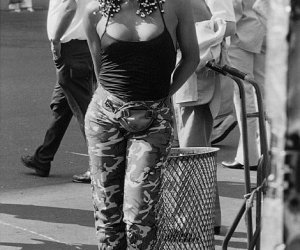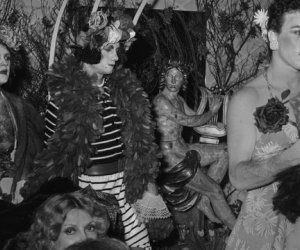Genius who made wobbly bits beautiful

There is a delicious type of miniature pancake, the recipe for which dates back to the 16th century, that tourists are offered in the Netherlands. They are called poffertjes and are quite unlike our thin, abstemious Shrove Tuesday version.
Looking like puffed-up feather pillows, they are dusted with sugar, glazed with melted butter and drizzled with syrup. On particularly cold days, a measure of brandy might find its way into the batter.
These culinary delights were undoubtedly much loved by those generously proportioned women painted by the great Flemish artist Peter Paul Rubens — with their creased and creamy flesh, bosoms pulled in and pushed up by corsets, their plump elbows and, above all, their soft, eiderdown bottoms.
Indeed, the word ‘Rubenesque’ has come to be used to describe any woman of a certain size and softness.
The comedian Dawn French has, self-deprecatingly, joked: ‘If I had been around when Rubens was painting, I would have been revered as a fabulous model. Kate Moss? She’d have been the paintbrush.’
It’s a good line, but it is to misunderstand Rubens if he is seen today as a man who encouraged women to embrace their curves, learn to love their jiggly bits and never say no to a second poffertje.
The fact is that Rubens was not rebelling against a 17th-century Size Six ideal to champion the ‘larger lady’. Back then, there was no Size Six ideal.
What Rubens revelled in was sheer abundance. He was attracted by wealth, titles, courtly grace, sumptuous fabrics, bounty, beauty, palaces, friends in high places, travel, fountains, sweeping lawns, manicured gardens and banqueting houses.
As you can see at a new exhibition, Rubens And His Legacy, at the Royal Academy in London, his enthusiasm for delicious, wantonly plump female flesh was part of this taste for luxury and plenty.
Born in 1577 into an affluent, respected family — his father was a lawyer — and brought up in Antwerp, Rubens was appointed a page to a noblewoman, Marguerite de Lalaing d’Arenberg, Comtesse de Ligne, after finishing his schooling. This early association with courtly manners helped to make him a hit with aristocratic and royal patrons after he trained as a painter.
His client list reads like a who’s who of European society: counts, dukes and archdukes, earls and knights, King Philip IV of Spain and our own King Charles I.
Rubens, who served not only as a court painter but also as a diplomat, was dubbed ‘the prince of painters and painter of princes’.
Still, he is best remembered for his plump and inviting nudes.
We cannot blame the poffertjes alone, for the Low Countries at that time were truly a place of guzzling and gluttony.
One historian remarked in 1665 that the land ‘overflows with butter, cheese and milk’. They weren’t the half of it. Sugar arrived on ships from Brazil. Traditional waffles and pancakes, once served plain, were now dusted with sugar and caramelised sauces.
Cakes and biscuits were studded with candied fruit, crystallised ginger or molasses.
Almond tarts and rosewater flavoured marzipan were served on special occasions. Honey cakes and caramel were daily treats.
There were dessert creams made with milk, sugar, cinnamon, eggs, and apples.
One chronicler lists 41 types of biscuit, from those made with aniseed to others baked with cherries. Marrons glacés (sugared chestnuts) were imported from France.
Whenever gluttons felt sated, they tucked into salads of imported fruits — the rich could afford pineapples, while middle-class burghers made do with melons, oranges and grapes. Any pretence at virtue, however, was undone by a tendency to cover the grapes in treacle.
(dailymail.co.uk)
ANN.Az



Similar news
Similar news




































 Photo
Photo 



 Video
Video 

